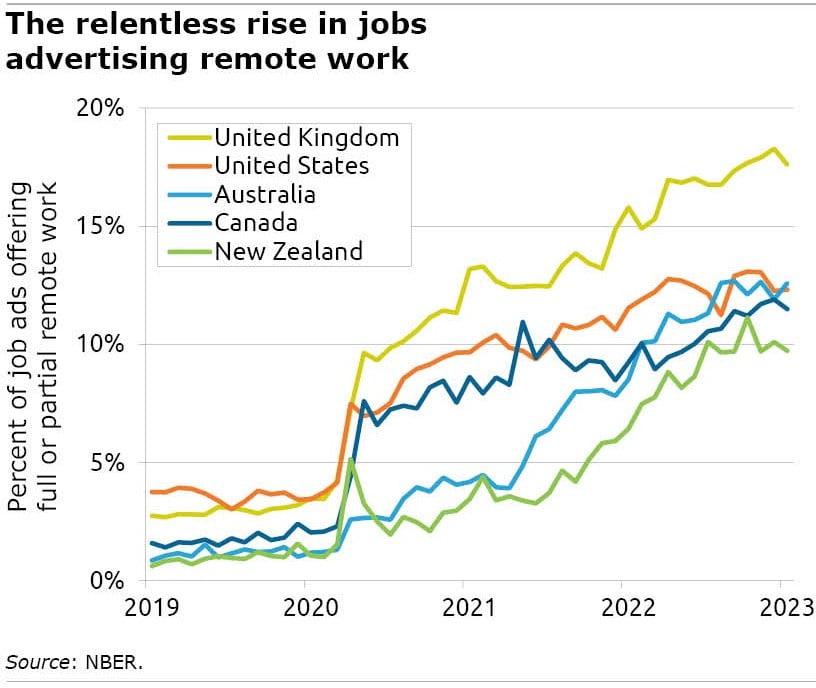
Remote Work Didn’t Recede with Pandemic
The remote work necessitated by COVID may be here to stay in five English-speaking countries from Australia to the United States.

That’s the conclusion from a study of 250 million online job ads – nearly half of them in this country. The number of postings in January that offered remote work for one or more days per week was three to five times larger than the remote work positions advertised on the cusp of the pandemic in 2019. Notably, their numbers increased sharply last year as COVID was retreating.
The countries in the study are: Australia, Canada, New Zealand, the United Kingdom, and the United States. The United Kingdom has the largest share of positions advertising remote work – 18 percent. The United States and Australia each have 12 percent.
During the first two months of the pandemic, as businesses around the world shut down, remote work soared. That initial spike was followed by sustained growth throughout the pandemic.
“It has become clear that this shift will endure long after the initial forcing event,” the researchers said.
They identified fully or partially remote positions by working with a Boston data company that scraped government and private-employer websites, job boards, and job-vacancy aggregators like Indeed.com and Monster.com. They searched key words in the job ads including remote work, work from home, and home office.
All five countries experienced big increases in remote work, but the researchers said there is “a high degree of heterogeneity in remote work adoption” in the industries and companies where these flexible jobs are located.
For obvious reasons, industries like construction and food preparation have not seen significant shifts to remote work. But many different types of white-collar industries – finance, law, and architecture – have had huge increases. Computer programming also has seen a big jump in remote job postings. More than one in four jobs being advertised in two high-tech hubs – the San Francisco Bay area and Boston – are offering fully or partly remote work.
Even within a specific industry, competitors can have distinctly different policies. More than half of Boeing employees are permitted to work at home last year, but very few of SpaceX’s were. And more than 40 percent of Honda’s and more than 20 percent of General Motors’ advertised jobs were for remote work – and none of Tesla’s.
The lack of industry and company patterns, the researchers proposed, are probably “root[ed] in myriad forces, including worker and firm preferences, competitive pressures in the labour market, and local norms.”
Squared Away writer Kim Blanton invites you to follow us on Twitter @SquaredAwayBC. To stay current on our blog, please join our free email list. You’ll receive just one email each week – with links to the two new posts for that week – when you sign up here. This blog is supported by the Center for Retirement Research at Boston College.






